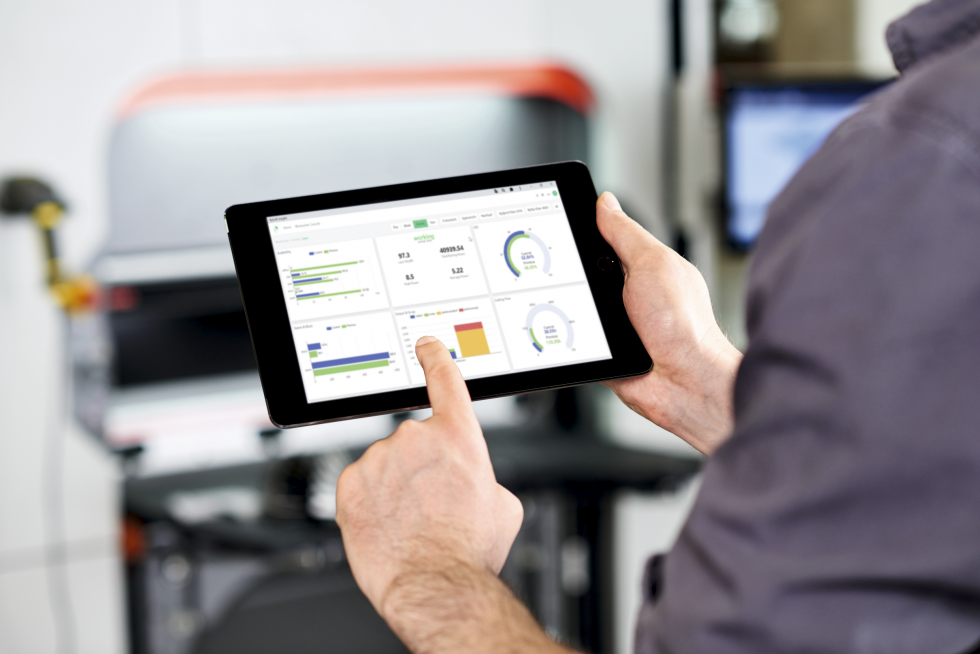
Blog Understanding Machine Life Cycle Triggers
These triggers can be both internal and external factors that affect the machine’s performance, reliability, and maintenance needs. Identifying and closely monitoring these triggers allows businesses to implement appropriate maintenance strategies and make informed decisions regarding equipment repair or replacement.
Machines have a finite lifespan, and understanding their life cycle triggers is crucial for optimizing efficiency, minimizing downtime, and ensuring long-term productivity.
Data-driven monitoring: Collecting, and analyzing data on machine performance, usage patterns, and maintenance history is vital for understanding the life cycle triggers specific to each machine. This data-driven approach enables predictive maintenance, optimizes equipment lifespan, and minimizes unexpected failures.
Fixed and Variable Costs
While we sometimes grow attached to our equipment, the answer as to when the equipment should be replaced should be an objective one rather than a subjective one. Each company is slightly different in how they approach their fixed and variable costs and what they consider to be an effective return on investment (ROI) for considering new equipment.
There is commonality though when it comes to analyzing cost per part. No matter how you calculate fixed costs and variable costs, all related fixed and variable costs eventually affect the cost per part and ultimately a company’s competitiveness. While there may not be one trigger that will determine when to consider new equipment, a combination of triggers should provide objective and financial justification.
Repair and Maintenance Factors
Regular maintenance is essential for prolonging a machine’s life. Failure to adhere to maintenance schedules can lead to issues like reduced performance, increased energy consumption, and costly breakdowns. Monitoring maintenance intervals and addressing potential problems promptly can significantly impact a machine’s overall life cycle.
One of the largest variable cost factors for older equipment is the cost to repair. How much is the cost to repair the equipment contributing to the total variable cost? How much more, as a percentage, does the cost to repair and maintain differ from when the machine was new? Of course, you will need to make this comparison based on an equal number of operating hours. The cost will need to be evaluated on a rolling basis and over time to see true costs and trends over time. Was it a one-time large repair cost or does the trend show increasing repair costs over time? Monitoring how repair costs increase over time compared to the original repair costs can be a key trigger for considering new equipment.
Cost per Part Factors
What about the cost per part? How many bids are being lost to competitors? What about the actual cost per part on your current equipment and comparing it to that of producing the same part on a new machine? If we compare the new cost per part calculation based on the costs (fixed and variable) and the run time estimates from the vendor, how much lower in percentage is the cost per part compared to the current equipment?
Cost per Part: Assessing the cost per part is equally important when considering new equipment. To do this, we need to compare the cost per part fabricated on the current equipment with the projected cost per part fabricated on the new machine. The steps to determine this are as follows:
- Calculate Current Cost per Part: Divide the total cost (including fixed and variable costs) of producing a specific number of parts on the current equipment by the total number of parts produced.
- Projected Cost per Part on New Machine: Obtain cost estimates from the vendor for producing the same number of parts on the new equipment, considering both fixed and variable costs.
- Compare Cost per Part Difference: Calculate the percentage difference between the current cost per part and the projected cost per part on the new equipment.
When the cost per part difference exceeds a certain threshold percentage (e.g., 20% or any other predetermined value), it becomes a trigger to consider new equipment.
Revenue Growth Targets
What about revenue growth targets? What percentage of revenue growth did you forecast and are you losing that growth due to a lack of competitiveness, higher operating costs, and reduced productivity? Failing to meet revenue growth targets due to reduced productivity and higher operating costs can be a trigger for equipment replacement. Additionally, when squeezed margins affect a company’s ability to sustain a minimum operating margin percentage, considering new equipment becomes necessary.
Assessing the ROI of new equipment and comparing it with a predefined threshold is another trigger to consider.
Maintaining the Competitive Edge
Technological obsolescence: With rapid advancements in technology, machines can become outdated quickly. When newer, more efficient models become available, it may be economically advantageous to replace aging equipment rather than continue to maintain it. Production changes in production requirements or shifts in business needs might demand a different machine capacity or functionality. Consequently, machines may need to be upgraded or replaced to adapt to these changes.
Embracing a Proactive Replacement Strategy
Understanding machine life cycle triggers is crucial for optimizing efficiency, reducing operational costs, and avoiding unplanned downtime. It is up to each company to determine the right triggers and their threshold values. By proactively monitoring usage hours, implementing proper maintenance, and staying ahead of technological advancements, businesses can unlock the full potential of their machines and remain competitive.
Combining a data-driven approach with financial perspectives allows companies to make sound decisions that ensure revenue and margins align with business objectives. Embracing a proactive strategy for equipment replacement ensures that businesses remain at the forefront of technological advancements and continue to thrive in today’s dynamic competitive environment.